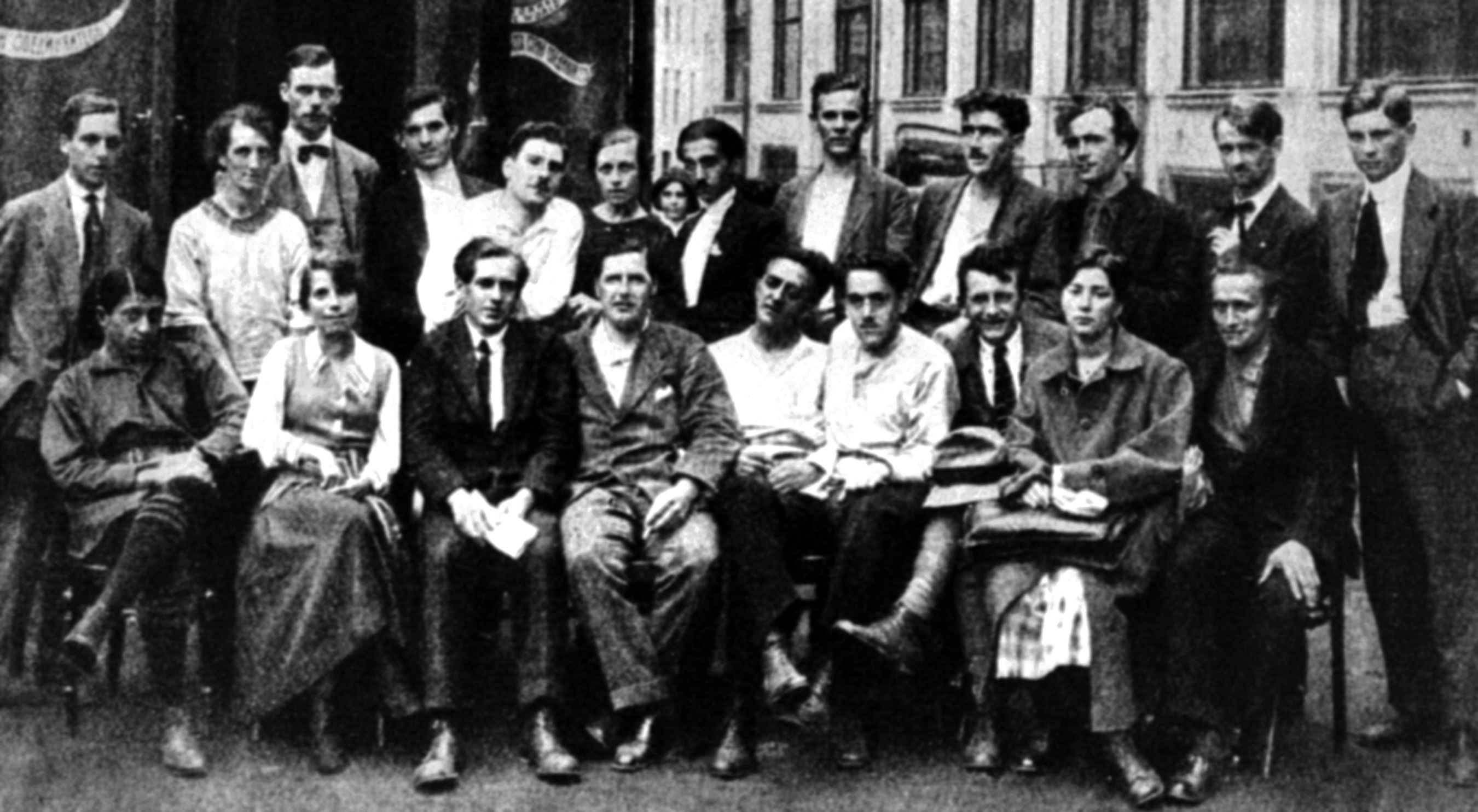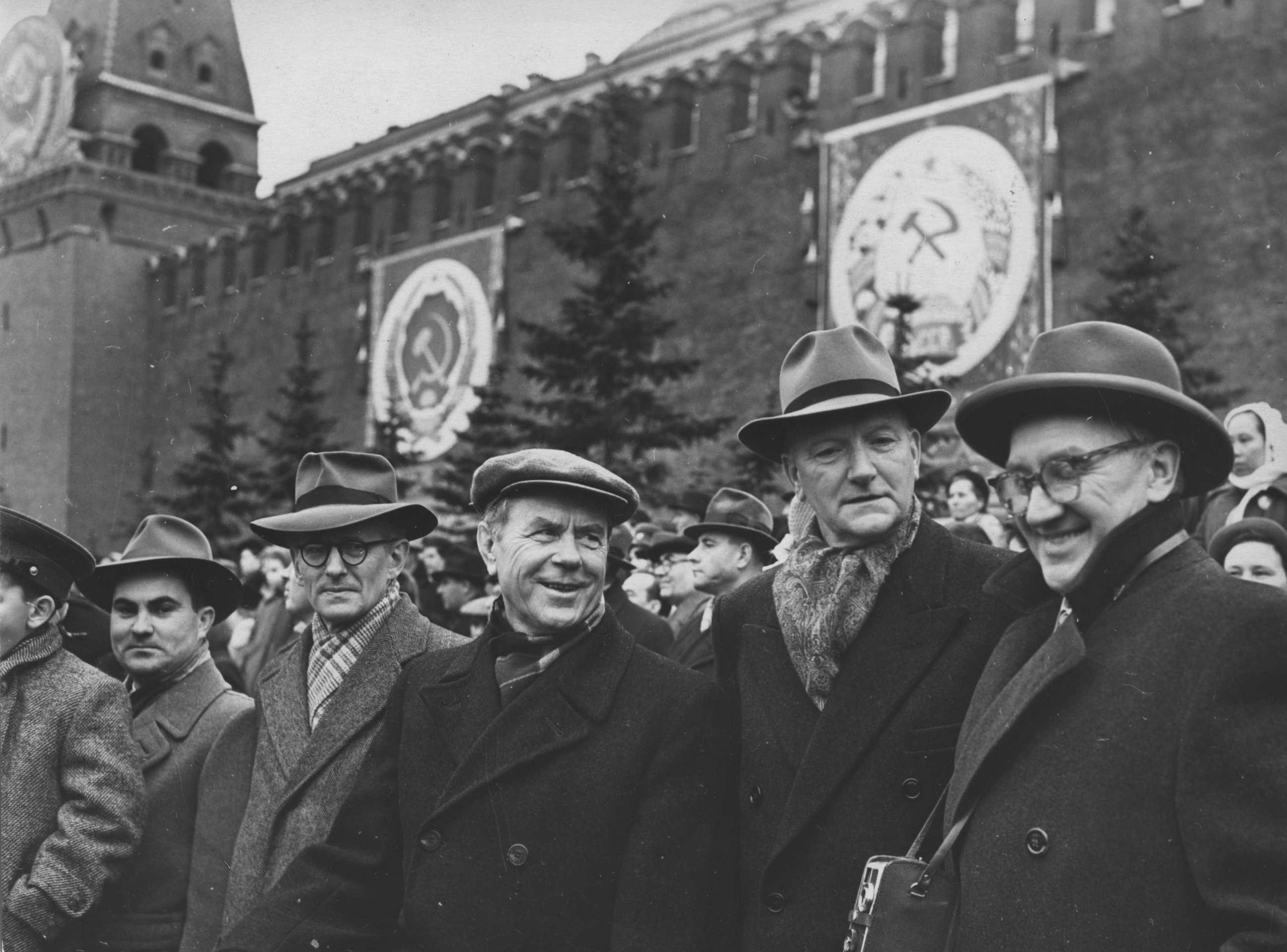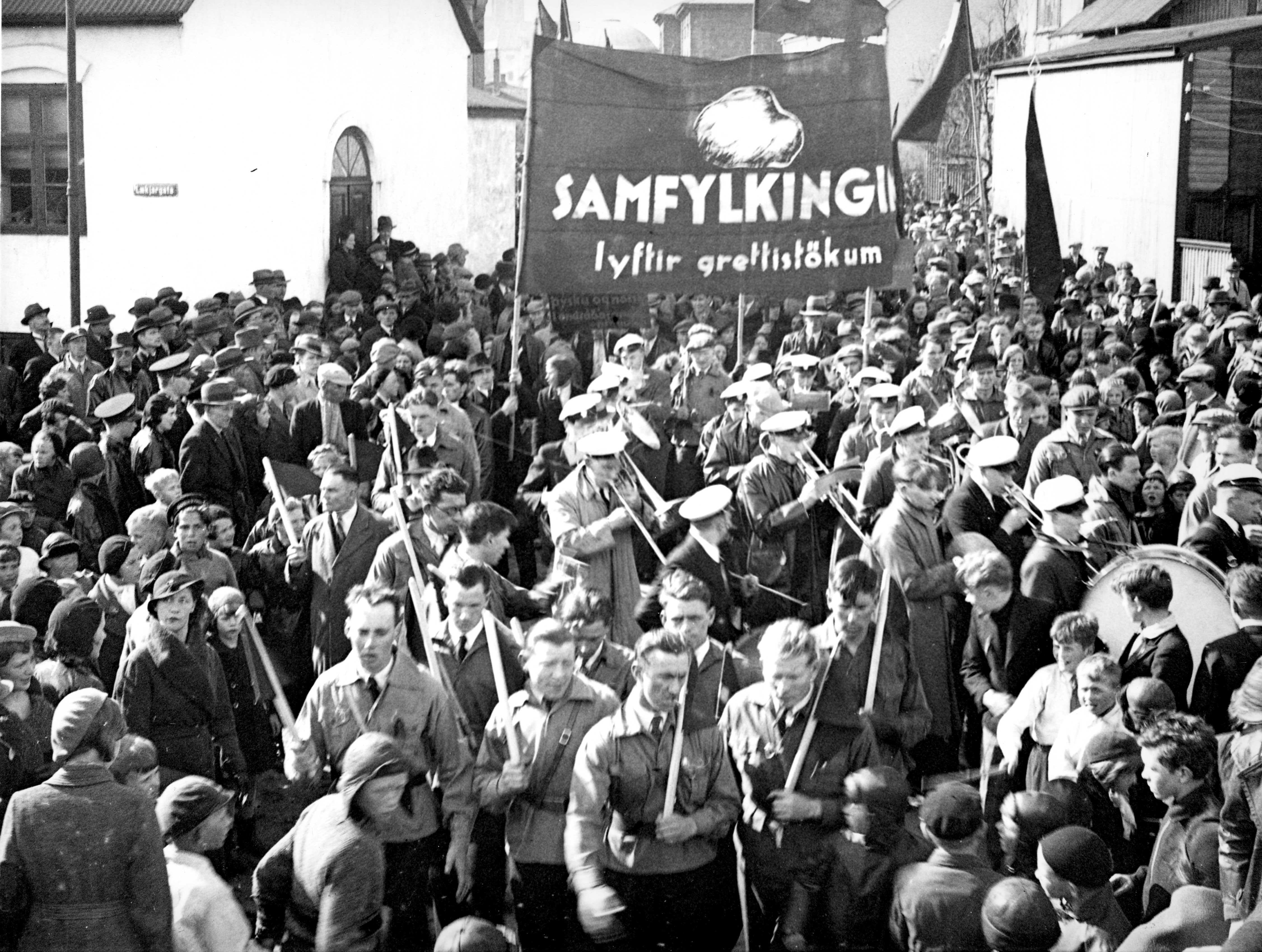The Rise and Fall of Icelandic Communism. An Interview with Hannes Gissurarson
Few have ever heard of the Icelandic communist movement, a fringe group that took many forms and included actors of various political persuasions between 1918 and 1998. Communistcrimes.org had the pleasure of talking with Hannes Gissurarson, a historian of this small movement which, despite its size, wielded considerable influence in their corner of the world.
Tell us about your book on Icelandic communists in the period 1918-1998. When did you write it, and why?
It started when I decided to translate the Black Book of Communism into Icelandic, and I did so in 2008 to 2009. I was going to write a postscript, as has been done in many countries, for example Germany, about the communist movement of the country in which the book was being published.
But it turns out that I really couldn't write the postscript because so many things were not investigated properly, so I had to do a lot of research on my own. So, out of a possible postscript to the Black Book of Communism came my 624-page history of Icelandic communism from 1918 to 1998. And what I did in that book was to pose a particular question and to try to answer it: To what extent were the Icelandic communists ‘communists’ in the classic sense of the word? That was to say, to what extent were they beholden to the Moscow rulers and to what extent did they endorse oppression and violence?

And you decided to publish an English version of the book as well?
Yes, what I initially did was write a summary of the book. That was because a friend of mine, the editor of the Black Book of Communism Stéphane Courtois, encouraged me to write an English version so that people elsewhere could see what had happened in Iceland, even if there was no great historical drama about Iceland as it was a remote, peaceful corner of the world.
I think a great number of people outside of Iceland do not know much about the history of Icelandic communism. Could you tell us: How far back can it be traced? How did it come to be?
In my book, I argue that communism in Iceland can be traced back to November 1918, when two students in Copenhagen named Brynjólfur Bjarnason and Hendrik S. Ottósson participated in street riots and became radicalized. They became communists. That's basically when it began. They then went to Moscow in 1920 to attend the second Comintern Congress, and Brynjólfur Bjarnason became the first and only chairman of the Communist Party.
As for a rough date when the Icelandic communist movement could be said to have ‘ended’, I think it was the autumn of 1998 in Havana, Cuba. This is when the last recorded activity of the People's Alliance, the historical successor to the Icelandic communist movement, took place. This was a tour of Cuba at the invitation of the Cuban Communist Party. Nothing has been heard from the communists since then.
Could you give us a brief overview of the major turning points that the Icelandic communist movement underwent?
I think that the first real turning point in the history of the communist movement came, of course, when the Communist Party was founded in 1930, and subsequently when it turned itself into the Socialist Unity Party in 1938. This was not really a pure communist party, but it was controlled by the communists, a hardcore cadre of communists that maintained relations with Moscow.
It gets more complicated. In 1956, the Socialist Unity Party ceased to stand in elections and formed an electoral alliance with some left-wing Social Democrats. This was known as the People’s Alliance. The communists were influential in this coalition, but they didn't dominate it as much as they did the Socialist Unity Party. Those communists who were close to their Kremlin masters more or less lost their influence in 1968. This happened for two reasons: One is that the People's Alliance transformed itself from an electoral coalition into a political party. And secondly, because the Red Army invasion of Czechoslovakia following the Prague Spring shocked many Icelandic leftists, which left a lasting impact. So, in short, the turning points were 1918 and 1930, 1938, 1956, 1968, and 1998.
When would you say the Icelandic communist movement ‘peaked’?
The peak of the communist influence and popularity was between 1942 and 1953. They received 19.5% in the elections in 1946 and precisely the same percentage in 1949. So almost 1/5 of the Icelandic voters, they voted for the communists. So, at that time they were very influential.
At some point the communists were even more influential than the Social Democrats. How do you think their success can be explained?
It's a very interesting question why the communists defeated the Social Democrats in the early 1940s, why the Socialist Unity Party controlled by the communists was more influential than the Social Democrats. In the final chapter of my book, I discuss this briefly, and I think that there are several answers. One is that Iceland was somewhat like Finland in that they were both new states, new countries where civil society was not as well developed, or at least not as well developed as in Sweden, Denmark, and Norway. Another explanation is that there was a similarity between Iceland and Finland in that they were both much poorer than the three Scandinavian countries. So, I think that the Icelandic communist movement is similar to the Finnish communist movement in that respect. There are several other possible explanations, but I think that these two are the most obvious ones.
Although the Icelandic communist movement changed its name twice, was there something that characterised the movement as a whole?
I think that the difference between the Icelandic communists and the other parties was that all the other parties categorically rejected violence as a means of promoting their political ideals, whereas the communists did not.
And this continued even after they had become more democratic. In the 1950s and 1960s, they used violence in strikes and trade union activities and so on. And, of course, everybody should recognise this because this was precisely the reason why Marxist communist movements in the late 19th century and early 20th century split into two factions, the communists and the social democrats. It was the question of whether or not violence was an acceptable means in the struggle for the future. The communists thought that violence was acceptable, whereas the social democrats were parliamentarians and democrats.
I think the other important claim you make in your book is that the Icelandic left had close ties with the Kremlin, and thus were more influenced by the Soviet leadership than had previously been recognised. Could you please describe the connections they had?
The communists themselves always denied that they had any improper relationship with the Soviets, but of course they did. It all started as early as 1920 when one of the two Icelandic delegates to the Second Comintern Congress in Moscow took steps towards securing Kremlin funding through a Swedish agent. Unfortunately, we know little about this financial support of the Communist Party during the period of 1930 to 1938. It was likely kept quite secret.
And we have to keep in mind that Iceland was a very small country. So even if the sums were small by international standards, they made a lot of difference in Iceland. The communist movement in a broad sense was able, for example, to build three large houses in Reykjavik. That's quite an achievement in such a small country as ours at that time.

Icelandic communists no doubt heard about the crimes of Stalinism; the show trials, the purges, the Soviet invasion of Finland in 1939 and so on. In your book, you also give many other examples of this apparent discord between the utopian ideals of Marxism-Leninism and the realities on the ground in the Soviet Union. How did such reports affect the communists in Iceland? How did they react to these events in the 1930s?
It's really quite surprising, in my opinion, how little impact all these things had on Icelandic communism. They mostly seem to have been hardcore Stalinists, and they generally followed the Soviet line in most cases. I know only of only two disagreements between the Socialist Unity Party and the Soviet Union throughout the Party’s lifetime. One disagreement was that they were not willing to condemn Josip Tito's Yugoslavia, and then Enver Hoxha’s Albania. They wanted to keep peace with all the communist parties worldwide.
Secondly, they offered mild criticism of the invasion of Hungary in 1956, but only very mild one. And there was only a handful of people who left the party at that time. The invasion of Czechoslovakia in 1968 had a much larger impact.
Do we know how Stalin’s death, and how his successor Nikita Khrushchev’s ‘secret speech’ and subsequent destalinisation changed things?
It greatly affected the Icelandic communists. Not by turning them away from communism, but rather by making them angry with Khrushchev for having revealed the crimes of Stalinism that they, the Icelandic communists, had always denied! So, the Icelandic communists became a bit of a laughing stock in Iceland because Khrushchev had revealed these crimes in his secret speech at the Soviet Communist Party Congress, but the Icelandic delegates to the Congress weren’t kept in the loop. They only read about these crimes in the newspapers on the way back from Moscow to Iceland. So they were embarrassed and humiliated by the exposure of Stalin’s crimes. But they didn't learn anything from it, really. All power tends to corrupt and absolute power corrupts absolutely, which is one of the great lessons of the Soviet experience.
What impact did the 1968 invasion of Czechoslovakia by the Soviet Union and its Warsaw Pact allies have on the communist movement in Iceland?
The old, hardcore Stalinists were silent. They didn't defend it, they just didn't talk about it. But the new generation decided to cut all ties with the Soviet Union and with the Warsaw Pact countries that had invaded Czechoslovakia. So that was quite a difference from previous times. After that, only a very small number of people had anything to do with the Soviets.
But it didn't really make much of a difference in terms of the policies of the People's Alliance. It was just as Marxist as it had been before. It didn't revise its policies, it just cut off its ties with Moscow.
What was the fate of the Icelandic communist movement?
Well, the old communists simply faded away. And there was no younger generation to take up the banner. But as I point out in my book, the communists looked with great interest at Vietnam, Cuba, Nicaragua, even if in such places we could see the same communist oppression as we had seen before in the Soviet Union and in China. So they apparently didn't learn much from the experience of the Soviet Union and China.
And it ended in 1998?
It did yes: as I said earlier, in 1998 they went on a courtesy visit to Havana at the invitation of the Cuban Communist Party, which is extraordinary because Castro not only established an autocracy of the Castro family in Cuba, he also made Cuba one of the poorest countries in Latin America. It was one of the most affluent countries in the Caribbean before he came to power.
It was somewhat surprising to read that the Baltic nations and Icelandic communism were related to each other. Could you talk a little bit about that too?
Firstly, Liba Fridland gave a series of lectures in Iceland in 1922. She was a Latvian who had experienced the Bolshevik Revolution and spoke Danish. The Icelandic communists protested fiercely against her. I tried to find out what happened to her afterwards, but probably she perished in the Holocaust because she returned to Riga after her trip to Iceland.
Then, there was a lot of discussion during the Second World War when a Lithuanian refugee, Teodoras Bielackinas, who spoke Icelandic fluently, wrote a series of articles about communist oppression in the Baltic countries. Again, the communists protested, even going so far as to call him a fascist despite the fact that he was a Jew. Unfortunately, he was in bad health and died in 1947. And then in 1957, the Icelandic President and the Minister for Foreign Affairs, who were both staunch anti-communists, received Dr. August Rei, who was the Prime Minister of the exiled government of Estonia, at the President's residence. The Soviet ambassador protested loudly. And it's also interesting that the first book published by the Public Book Club, which had been established in 1955 to counter the communist influence in Iceland, was a book by Ants Oras, a professor of literature in Estonia who had gone to Sweden, and later to America. The book was Baltic Eclipse, a very well written and moving account of Soviet oppression in Estonia.
And then in 1973, a friend of mine, David Oddsson, translated a book by Andres Küng into Icelandic. It was about the Sovietization and Russification of Estonia, and was called Estonia: A Small Nation Under Foreign Yoke. Oddsson became the Prime Minister of Iceland in 1991, and one of his first activities was to resume diplomatic relations with the Baltic countries. He was helped in this by his Minister of Foreign Affairs, Jón Baldvin Hannibalsson, who was also very strongly anti-communist. So together, they established a special relationship with the Baltic countries.

After your book was published in 2011, it received much attention among Icelandic historians. Could you tell us a bit more about the response your book has received in your country so far?
Well, the Icelandic Historical Association of Historians held a special meeting where four historians tried to refute the conclusions of my book and also those of a recent book by my colleague Thor Whitehead, a professor of history at the University of Iceland. He had published a book about the Icelandic communists mainly focusing on the violence in the 1920s, 1930s, and 1940s. It was really a book about their revolutionary fervor. He called it Soviet Iceland: The Country of Our Desires.
The meeting about the two books was quite heated. Basically, the argument presented against Whitehead and me was that the Icelandic communists were not really communists, that they were rather nationalists who cherished the Icelandic national heritage and who were trade unionists. The four historians tried to minimise the element of Soviet influence, and also the tradition of violence that you had in the early communist movement.
I directed a few questions to them about the movement, and I must say that they were really not able to answer them because it is so obvious that there was a strong Soviet influence on the Icelandic communist movement. There were more than 20 Icelanders trained in special camps in Moscow, in secret schools for revolutionaries in the 1970s, just to take one example.
So, it's undeniable that there was a strong Soviet influence on the Icelandic communist movement. The historians who have been trying to respond to us, they have basically said that we were guilty of triumphalism. That is to say that we had won the Cold War and that we were claiming that the communists were just the servants of foreign powers, whereas the history was much more complicated. I would actually agree with that to some extent. We have to explain how the communists could get almost 20% of the vote in elections for several years. So, I think they had strong roots in Icelandic society.
Does the general public have any interest in such issues?
Well, I wouldn't say that there is great interest in the communists in Iceland. They are seen as rather uninteresting and boring. They would be much more interested in the Nazis. You know, there was a small Nazi party in Iceland and people are very interested in that, but not so much in the communists. In Iceland, there is a tendency now just to shrug one's shoulders and say “Well, this is all history, and it doesn't matter anymore. Nobody is a communist anymore.”
Hannes Hólmsteinn Gissurarson is a professor of political science at the University of Iceland, Reykjavik. His specialisations include the history of Icelandic communism, liberal economics, and Icelandic politics. His latest book, Communism in Iceland 1918-1998, was published in 2021.